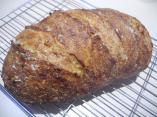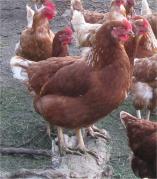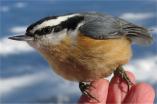
Ok, so I had never heard of Le Marche before I came to Italy. Well I had, I just didn’t know what “The Marches” meant – it was a phrase out of turn of the century literature, I thought; and if I’d thought about it I probably would have believed it was an old demarcation that no longer existed. And in fact the term, meaning “borders” or “boundaries” has been used to describe the margins of many different countries.
In Italy, the name was bandied around through history due to this area’s position between the north and south of Italy, which at one time marked the border of the Holy Roman Empire. It has been settled since paleolithic times, changing hands at intervals as the Picini gave way to the Romans who gave way to the Goths who gave way to alternating spheres of ownership by emperors and the papacy, until the fiefdoms gave way to free communes, and the area joined the kingdom of Italy in 1860 and that gave way to the republic in 1946. Now here we are in the modern era, watching successive colonisations by various armies of tourist and agribusiness.
We stayed pretty firmly in the central province of Ancona for our visit, named by previous owners for the “elbow” (agkonas)/Ancona, the eponymous industrial port that sits above Monte Conero, but caught glimpses of the others. Facing the Dalmation coast, Ancona is a big chunk of mountainous land well-provided with beaches for summer visitors.
Our hotel was in Porto San Giorgio, an off-season seaside town if ever there was one, the fronds of its palm trees bound up in bamboo against the winter storms, shutters drawn, shops and restaurants closed for the season. Or maybe not, since there are apparently a lot of out-of-towners from Rome and elsewhere with a proprietorial toe in the Adriatic who come up for weekends.

Among the many delights we tasted over the week, olive ascolane deserve special mention. These Italian equivalents of scotch eggs are made from olives (originally the nice big juicy Ascolana olives, of course) stuffed with or around meat filling, then breaded and fried. Lesser versions can be found in almost any supermarket in Italy, and there are many home-made versions. The ones we had were particularly fresh and tasty, so we’re spoiled (yet again) for life.

We managed to hit a warm, breezy day for our tour round the 25 hectare olive grove at Azienda del Carmine, where they grow Ascolana (the first to ripen, in May), Leccino (a smaller olive), Frantoio (the name means ‘olive press’ we learned), and other varietals.
Our translator explains the use of pheromone traps which the growers use to check the progress of the Bactrocera oleae, the olive fruit fly which is the main pest for olive growers. It lays eggs in the olives which not only destroy the fruit but make the crop unpalatable for use in olive oil; because of the volume of olives you need to put through the press, it’s impractical to try to sort the damaged olives, so prevention and chemicals are the only weapons there are. Instead of routinely treating their trees with pesticides as some of their neighbours do, these growers check the trees and fruit for flies and then treat only infested trees. Unfortunately it’s been a bad year for them this year.

Every ten years, the olive trees need a rigorous pruning, which takes them a year or two to recover from, so the grove is pruned in sequence, 5 hectares at a time.
After a welcome opportunity renewing and showing off our olive oil-tasting skills on a couple of their top oils, we were treated to a big spread of breads, cheeses, salumi and salads.
Yep, marvellous mozzarella – and a couple of different pecorinos, a young one (fresco) and a stagionato, all delicious with splodges of condiments which included a peperoncino jelly. The revelation for many of us was the wonderful combination of top quality olive oil taken in a single lingering mouthful with a chocolate shot cup, and an equally surprising and equally fine idea: drizzled over vanilla gelato.









0 Responses to A week in Le Marche – Olives